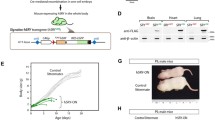Abstract
The murine X-linked steroid sulfatase gene (Sts) normally escapes X inactivation. However, we have observed that most long-term murine cell cultures are deficient in STS activity even though only the L cells are known to be derived from an STS− mouse strain. To investigate this phenomenon, we developed a selective system whereby STS+ cells could be selected from STS− populations. The system is based on making cells dependent on cholesterol-sulfate as the sole source of cholesterol, allowing only STS+ cells to grow. Two STS− cell lines, after treatment with either 5-azacytidine (5AC) or ethyl methane sulfonate (EMS), yielded STS+ revertants, suggesting that their STS− phenotype was due to hyper-methylation. To study the evolution of STS− cell lines, we established XO and XX primary lines from STS+ strains; the XX cell line remained STS+ after more than 200 cell doublings whereas the XO became STS− after about 100 doublings. Treatment of this STS−XO cell line with 5AC produced clones with restored STS activity. All the revertants showed a growth disadvantage compared to their STS− counterparts. It would appear that aberrant methylation is the basis for much of the STS deficiency observed in established murine lines and that its propagation is due to the growth advantage of STS− over STS+ cells.
Similar content being viewed by others
Literature cited
Keitges, E.A., Rivest, M., Siniscalco, M., and Gartler, S.M. (1985).Nature 315:226–227.
Keitges, E.A., Schorderet, D.F., and Gartler, S.M. (1987).Genetics 116:465–468.
Soriano, P., Keitges, E.A., Schorderet, D.F., Harbers, K., Gartler, S.M., and Jaenisch, R. (1987).Proc. Natl. Acad. Sci. U.S.A. 84:7218–7220.
Tiepolo, L., Zuffardi, O., Fraccaro, M., Di Natale, D., Gargantini, L., Muller, C.R., and Ropers, H.H. (1980).Hum. Genet. 54:205–206.
Curry, C.J.R., Magenis, R.E., Brown, M., Lanman, J.T., Tsai, J., O'Lague, P., Goodfellow, P., Mohandas, T., Bergner, E.A., and Shapiro, L.J. (1984).N. Engl. J. Med. 311:1010–1015.
Muller, C.R., Migl, B., Traupe, H., and Ropers, H.H. (1980).Hum. Genet. 54:197–199.
Migeon, B.R., Shapiro, L.J., Norum, R.A., Mohandas, T., Axelman, J., and Dabora, R.L. (1982).Nature 299:838–840.
Mohandas, T., Sparkes, R.S., Hellkuhl, B., Grzeschik, K.H., and Shapiro, L.J. (1980).Proc. Natl. Acad. Sci. U.S.A. 77:6759–6763.
Mosley, S.T., Brown, M.S., Anderson, R.G.W., and Goldstein, J.L. (1983).J. Biol. Chem. 258:13875–13881.
Chance P.F., and Gartler, S.M. (1983).Am. J. Hum. Genet. 35:234–240.
Balazs, I., Purrello, M., Rocchi, M., Rinaldi, A., and Siniscalco, M. (1982).Cytogenet. Cell Genet. 32:251–252.
Goldstein, J.L., Basu, S.K., and Brown, M.S. (1983).Methods Enzymol. 98:241–260.
Endo, E., Kuroda, M., and Tsujita, Y. (1976).J. Antibiol. 29:1346–1348.
Alberts, A.W., Chen, J., Kuron, G., Hunt, V., Huff, J., Hoffman, C., Rothrock, J., Lopez, M., Joshua, H., Harris, E., Patchett, A., Monaghan, R., Currie, S., Stapley, E., Albers-Schonberg, G., Hensens, O., Hirschfield, J., Hoogsteen, K., Liesch, J., and Springer, J. (1980).Proc. Natl. Acad. Sci. U.S.A. 77:3957–3961.
Radding, C.M., and Steinberg, D. (1960).J. Clin. Invest. 39:1560–1569.
Lowry, O.H., Rosebrough, N.J., Farr, A.L., and Randall, R.J. (1951).J. Biol. Chem. 193:265–275.
Farber, R.A., and Liskay, R.M. (1974).Cell Genet. 13:384–396.
Latt, S.A., Willard, H.F., and Gerald, P.S. (1976).Chromosoma 57:135–153.
Harris, M. (1984).Somat. Cell Mol. Genet. 10:615–624.
Ballabio, A., Parenti, G., Carrozzo, R., Sebastio, B., Andria, G., Buckle, V., Fraser, N., Craig, I., Rocchi, M., Romeo, G., Jobsis, A.C., and Persico, M.G. (1987).Proc. Natl. Acad. Sci. U.S.A. 84:4519–4523.
Gillard, E.F., Affara, N.A., Yates, J.R.W., Goudie, D.R., Lambert, J., Aitken, D.A., and Ferguson-Smith, M.A. (1987).Nucleic Acids Res. 15:3977–3985.
Yen, P.H., Allen, E., Marsh, B., Mohandas, T., Wang, N., Taggart, R.T., and Shapiro, L.J. (1987).Cell 49:443–454.
Lyon, M.F. (1961).Nature 190:372–373.
Cattanach, B.M., Pollard, C.E., and Hawkes, S.G. (1971).Cytogenetics 10:318–337.
McLaren, A., and Monk, M. (1982).Nature 300:446–448.
Kratzer, P.G., Chapman, M.M., Lambert, H., Evans, R., and Liskay, R.M. (1983).Cell 33:37–42.
Lock, L.F., Takagi, N., and Martin, G.R. (1987).Cell 48:39–46.
Gartler, S.M., Dyer, K.A., Graves, J.A.M., and Rocchi, M. (1985). InBiochemistry and Biology of DNA Methylation, (eds.) Cantoni, G.L., and Razin, A. (Alan R. Liss, New York), pp. 223–235.
Harris, M. (1982).Cell 29:483–492.
Harris, M. (1984).Somat. Cell Genet. 10:275–287.
Steglich, C., Grens, A., and Scheffler, I.E. (1985).Somat. Cell Mol. Genet. 11:11–23.
Harris, M. (1986).Somat. Cell Mol. Genet. 12:459–466.
Gey, G.O., Coffman, W.D., and Kubicek, M.T. (1952).Cancer Res. 12:264–265.
Warner, N.L., Harris, A.W., and Gutman, G.A. (1975). InMembrane Receptors of Lymphocytes, (eds.) Seligmann, M., Preud'homme, J.L., and Kourilsky, F.M. (North-Holland, Amsterdam), p. 203.
Bradley, A., Evans, M., Kaufman, M.H., and Robertson, E. (1984).Nature 309:255–256.
McBurney, M.W., and Rogers, B.J. (1982).Dev. Biol. 89:503–508.
Martin, G.R. and Evans, M.J. (1975).Cell 6:467–474.
Oi, V.T., Morrisson, S.L., Herzenberg, L.A., and Berg, P. (1983).Proc. Natl. Acad. Sci. U.S.A. 80:825–829.
Jainchill, J.L., Aaronson, S.A., and Todaro, G.J. (1969).J. Virol. 4:549–553.
Paige, C.J., Kinkade, P.W., and Ralph, P. (1978).J. Immunol. 121:641–647.
Author information
Authors and Affiliations
Rights and permissions
About this article
Cite this article
Schorderet, D.F., Keitges, E.A., Dubois, P.M. et al. Inactivation and reactivation of sex-linked steroid sulfatase gene in murine cell culture. Somat Cell Mol Genet 14, 113–121 (1988). https://doi.org/10.1007/BF01534396
Received:
Revised:
Issue Date:
DOI: https://doi.org/10.1007/BF01534396




